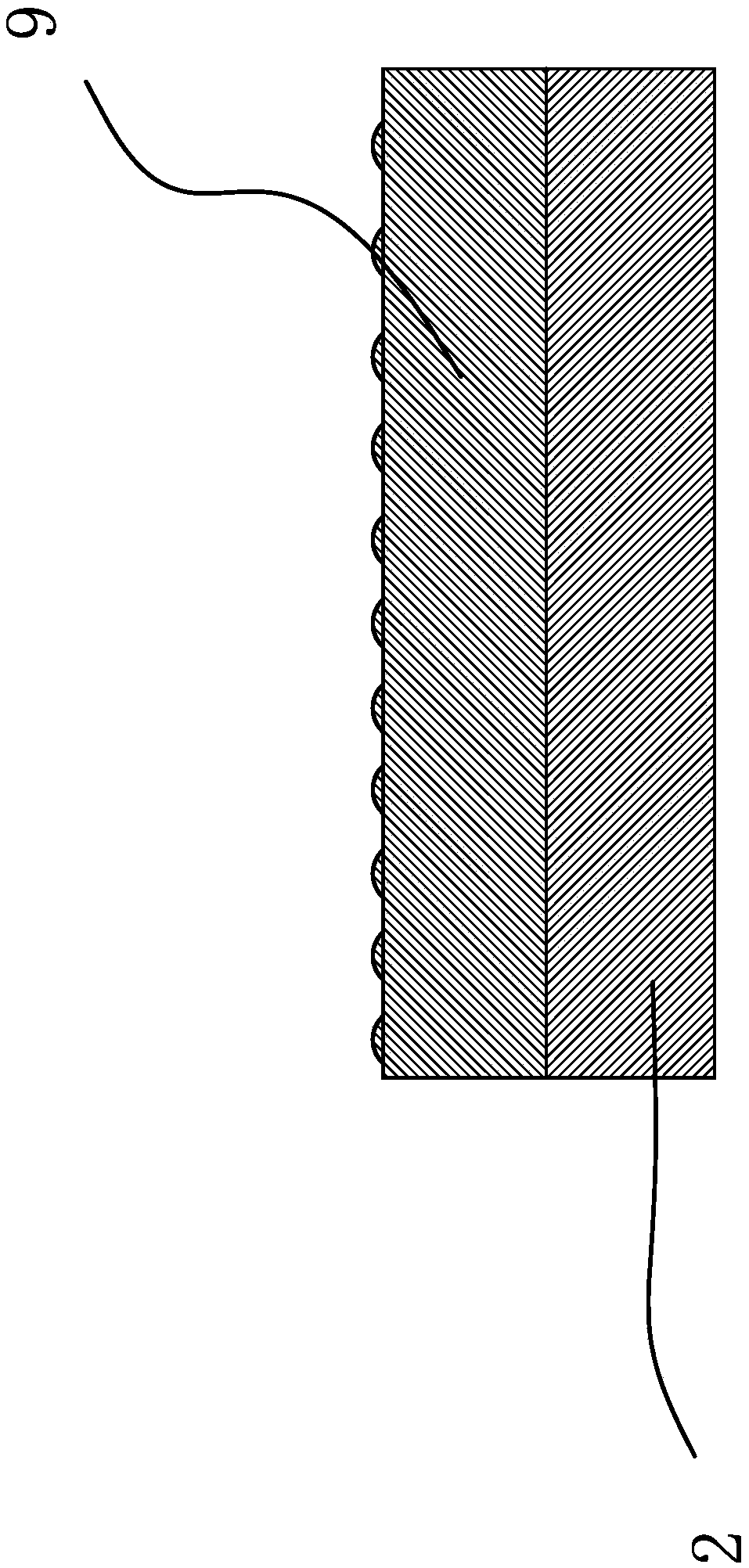A cloth transfer mechanism
A transfer mechanism and fabric technology, applied in the field of machinery, can solve the problems of reduced work efficiency, pressure changes, soft and wrinkled fabrics, etc., and achieve the effect of improving efficiency
- Summary
- Abstract
- Description
- Claims
- Application Information
AI Technical Summary
Problems solved by technology
Method used
Image
Examples
Embodiment 1
[0027] Such as Figure 1-2 As shown, the cloth transfer mechanism includes a pressing plate connecting plate 1, a front pressing plate 2, a rear pressing plate 3 and two upper pressing plates 6.
[0028]The cloth transfer mechanism is arranged above the worktable, and a drive source is also provided above the workbench. In this embodiment, the drive source is an air cylinder. The middle part of the pressing plate connecting plate 1 is provided with a connecting hole 1a, and the two sides of the connecting hole 1a A guide hole 1b is also provided, the piston rod of the air cylinder is fixedly connected in the connection hole 1a, and a guide shaft is provided on the worktable, and the guide shaft passes through the corresponding guide hole 1b. Both the front pressing plate 2 and the rear pressing plate 3 are located under the pressing plate connecting plate 1 , and the front pressing plate 2 and the rear pressing plate 3 are respectively opposite to the two ends of the pressing ...
Embodiment 2
[0033] The structure of this embodiment is basically the same as that of Embodiment 1, the difference is that the buffer is an elastic sleeve, and the elastic sleeve is sleeved on the guide rod 4, and one end of the elastic sleeve abuts against the pressure plate connecting plate 1 , the other end is against the corresponding front platen 2 or rear platen 3, under the action of the elastic deformation force of the elastic sleeve, the corresponding front platen 2 and rear platen 3 can be produced according to the flatness of the platen, that is, according to the unevenness of the platen The height difference can automatically adjust the initial compression, change the pressure of the front platen 2 or the rear platen 3, so that the front platen 2 or the rear platen 3 always stick to the platen, suitable for fabrics of different thicknesses and flatness is not high The platen keeps the cloth moving smoothly all the time, ensuring that the cloth can enter the follow-up processing ...
Embodiment 3
[0035] The structure of this embodiment is basically the same as that of Embodiment 1, the difference is that the buffer is provided on the surface opposite to the front pressure plate 2 and the pressure plate connecting plate 1, and on the surface opposite to the rear pressure plate 3 and the pressure plate connecting plate 1 One layer of elastic layer made of elastic material, through the elastic deformation capacity of the elastic layer itself, the corresponding front pressure plate 2 and rear pressure plate 3 can be adjusted according to the flatness of the platen, that is, according to the height difference caused by the unevenness of the platen. Automatically adjust the initial compression, change the pressure of the front platen 2 or the rear platen 3, so that the front platen 2 or the rear platen 3 is always attached to the platen, adapt to different thickness of cloth and the platen with low flatness, so that the cloth can be Always maintain smooth transfer to ensure t...
PUM
 Login to View More
Login to View More Abstract
Description
Claims
Application Information
 Login to View More
Login to View More - R&D
- Intellectual Property
- Life Sciences
- Materials
- Tech Scout
- Unparalleled Data Quality
- Higher Quality Content
- 60% Fewer Hallucinations
Browse by: Latest US Patents, China's latest patents, Technical Efficacy Thesaurus, Application Domain, Technology Topic, Popular Technical Reports.
© 2025 PatSnap. All rights reserved.Legal|Privacy policy|Modern Slavery Act Transparency Statement|Sitemap|About US| Contact US: help@patsnap.com



